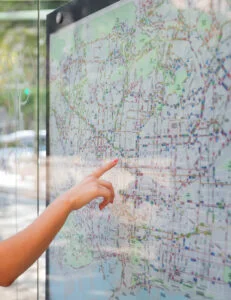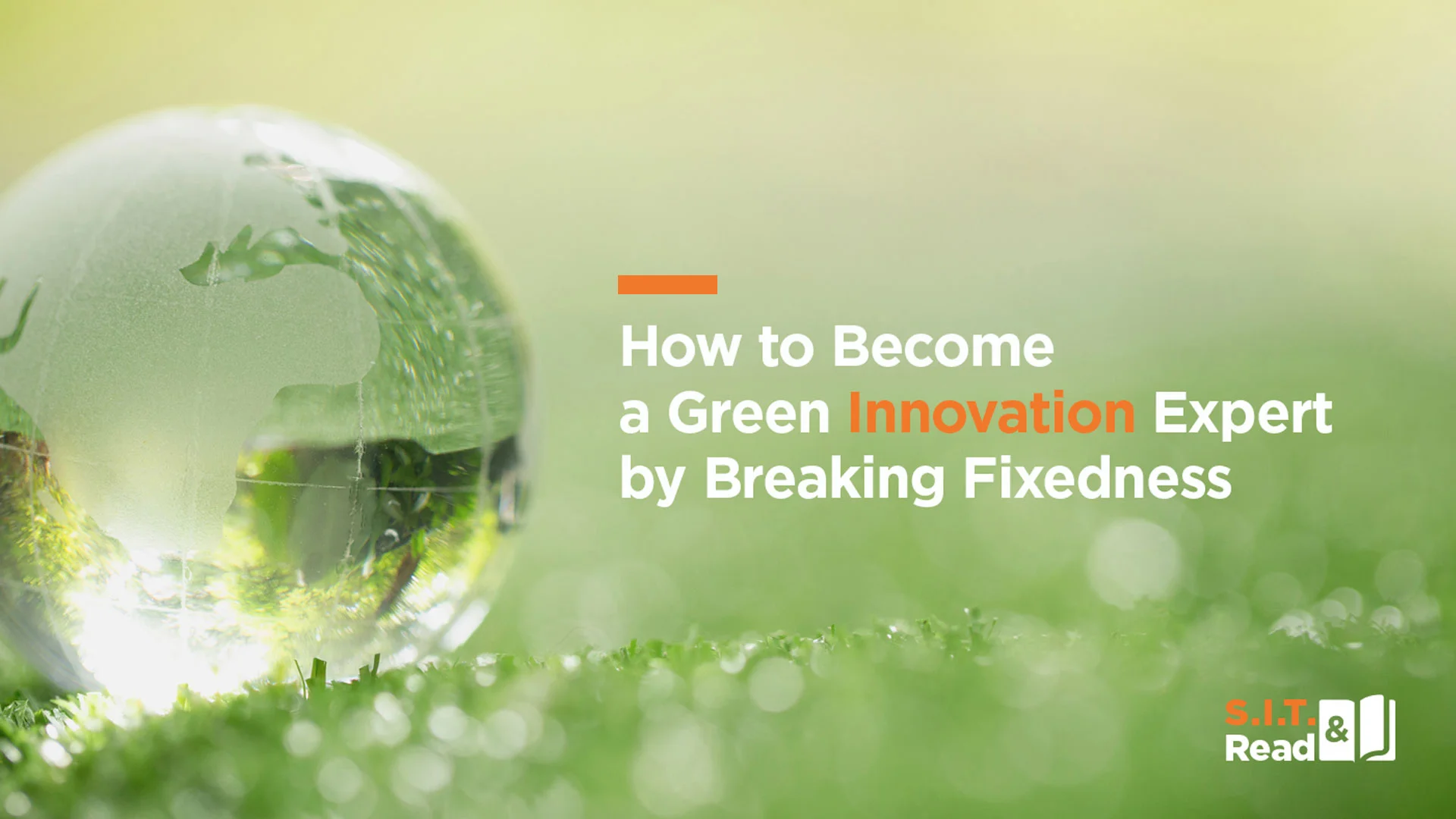Green innovation is an everlasting challenge, where many companies are looking for innovative ways to win this eco-marathon. Some industries are more active than others, affected by regulations and natural resources constraints. Sustainability goals provide many benefits to organizations. In addition to a company’s reputation, executives can enjoy an array of other benefits. But what are the best ways of achieving it? Read on to learn about how to achieve green innovation through breaking fixedness:
Cognitive Fixedness, first defined by psychologist Karl Duncker, prevents individuals and companies from creating new configurations in the systems they manage. This often blocks us from seeing potential efficiencies and material reduction, and breakthrough solutions to problems.
Check out these 3 main barriers to sustainable innovation:
 1. Structural – The tendency to view products and systems as a complete gestalt. Many SIT’s tools help break this particular fixedness to achieve sustainable innovation. For instance, a water saving toilet was developed by Villeroy-Boch in an SIT workshop. Multiplying the water streams resulted in more pressure in each stream, therefore requiring less water. This product won the ISH Innovation Prize and was chosen by Deutsche Bank in its transformation of its HQ to become one of the most environmentally friendly high-rises in Europe.
1. Structural – The tendency to view products and systems as a complete gestalt. Many SIT’s tools help break this particular fixedness to achieve sustainable innovation. For instance, a water saving toilet was developed by Villeroy-Boch in an SIT workshop. Multiplying the water streams resulted in more pressure in each stream, therefore requiring less water. This product won the ISH Innovation Prize and was chosen by Deutsche Bank in its transformation of its HQ to become one of the most environmentally friendly high-rises in Europe.
2. Functional – Seeing objects as capable only of fulfilling their original function. SIT uses the Task Unification tool to help innovators find new uses for existing resources, thus forcing them to find new functions for available objects and tackle functional fixedness.

3. Relational – The tendency to view relationships and dependencies between variables of a situation as static and permanent. Assif Strategies, our partners in a Greener by Design Conference, described the following case study during the event:
A bus company’s emissions were well above expectations.
They had 100 old buses and 50 new ones, and 400 drivers. Assif discovered that drivers were allowed to select both their buses and their routes based on seniority. Naturally, drivers chose the easier routes (that had fewer stops and shifts) and the newer buses. The relationship that resulted was that the older buses drove the “stop and go” routes on three shifts, while the new ones drove more continuously and were parked at night, obviously resulting in much higher emissions than necessary.
Breaking this relational fixedness required a
major cultural change in the company, and by
creating a new relationship within existing
available resources, the bus company was able
to reduce over 10 percent of its emissions.
Along with some other simple changes,
it achieved a total reduction of 50 percent.
How to overcome fixedness and break innovation barriers?
The challenge of breaking fixedness is threefold.
First, recognize you could be suffering from cognitive fixedness, and not seeing the entire potential “playing field”.
Second, identify underlying assumptions in the system in question and accept that even though “this is how we always did it” or “this is how it must be done” they can still be changed.
Lastly, be flexible about the structure, functions and relationships between the system’s elements in order to generate new forms that can lead to new thinking and new solutions.
This concept ties in well with the message of the keynotes in the Greener By Design conference; they all essentially break a critical underlying assumption about our industry or society: from William McDonough (Cradle to Cradle, MDBC) who questions why can’t a building be as smart as a tree, creating oxygen, food and shelter, to Tom Szaky (TerraCycle) who challenges the entire concept of garbage, to the point that he “no longer sees trash, only cash”, and to David de Rothschild, who endeavors to cross the Pacific Ocean on the Plastiki (homage to the Kon Tiki, of course) using the ocean’s most prevalent waste as means of transportation.
The green line
So what is the key takeaway? Breaking fixedness is a milestone for generating green innovation. Our innovation message for companies working on going greener is to focus on finding and tackling their fixedness.
